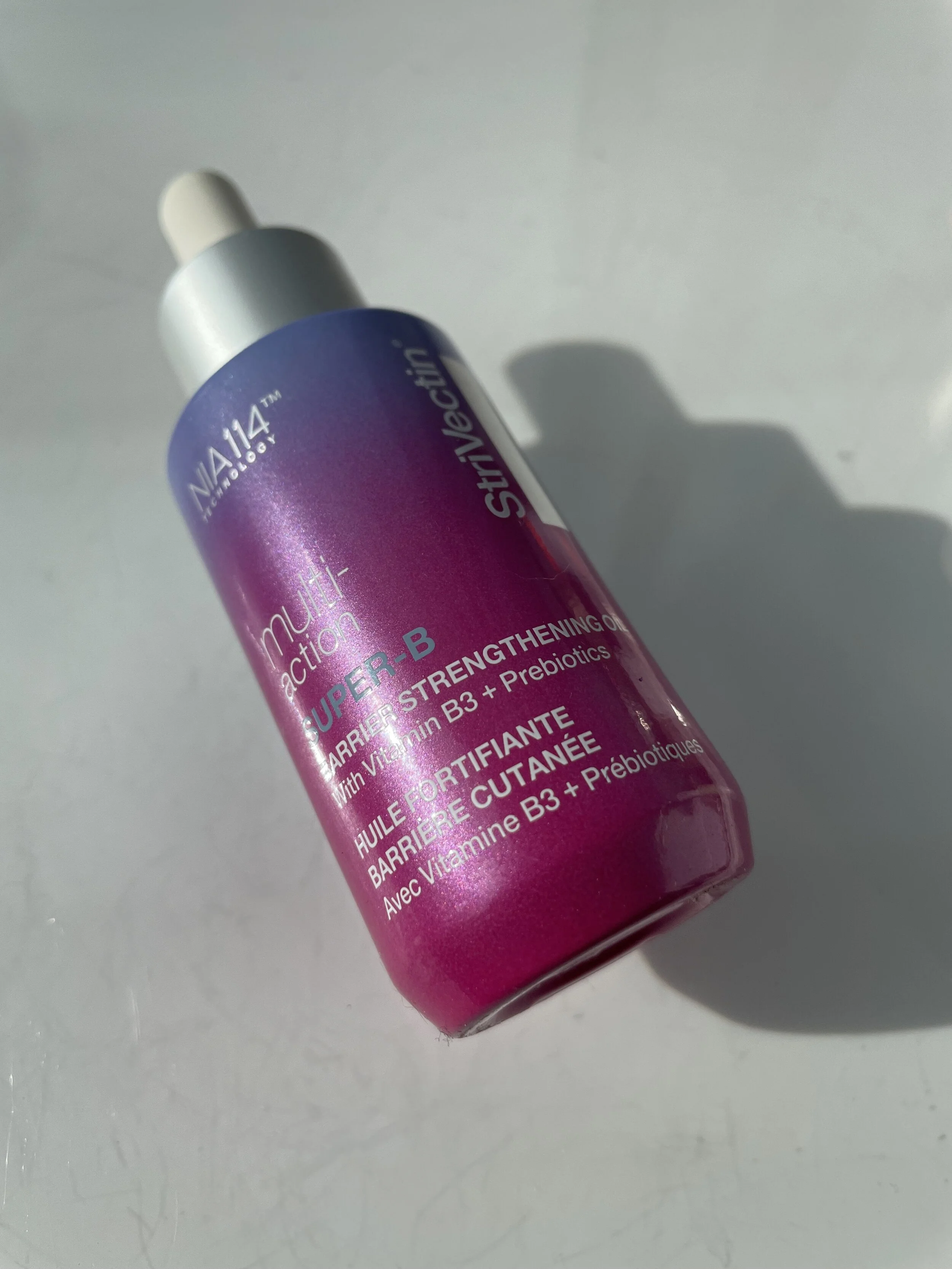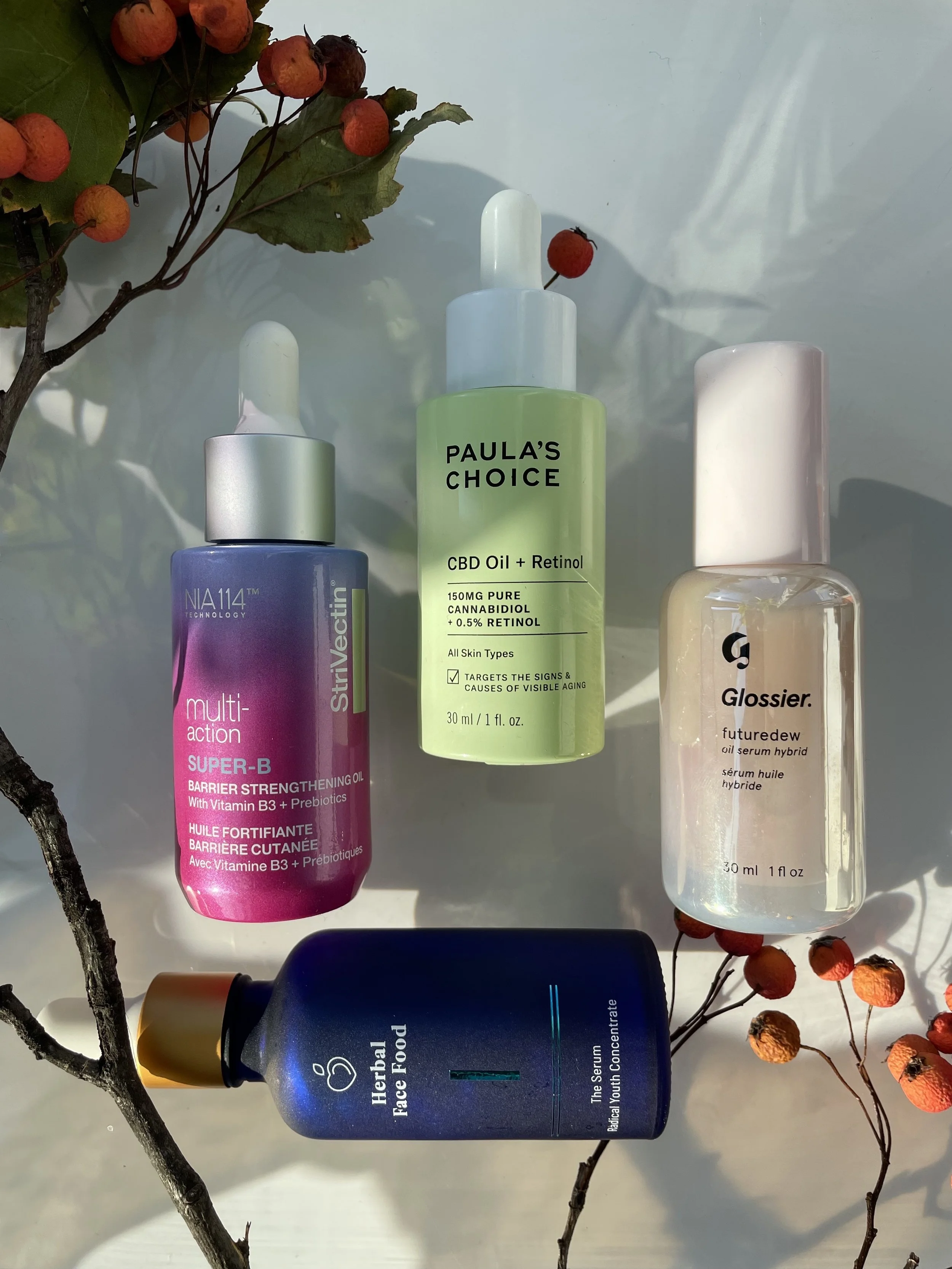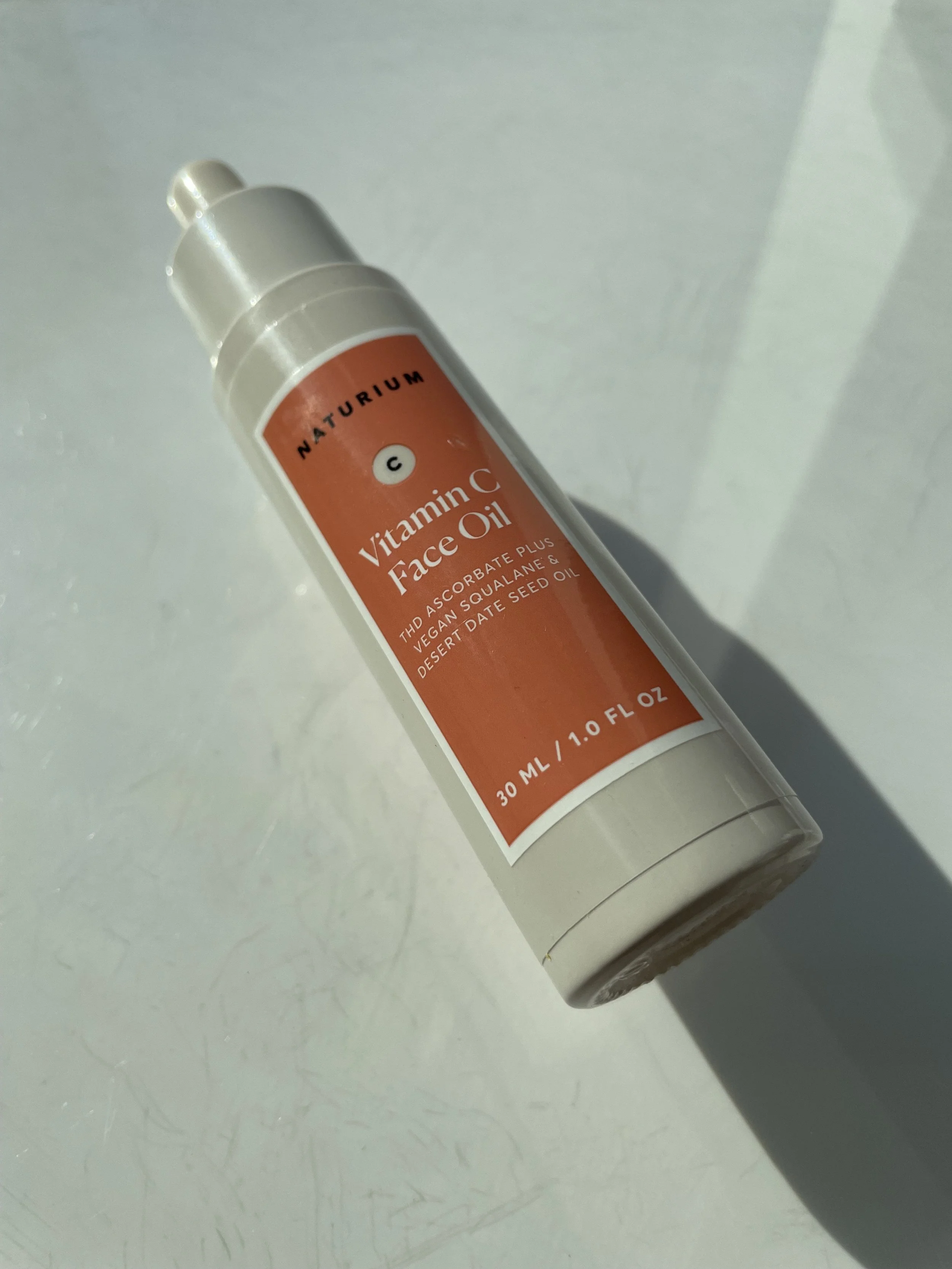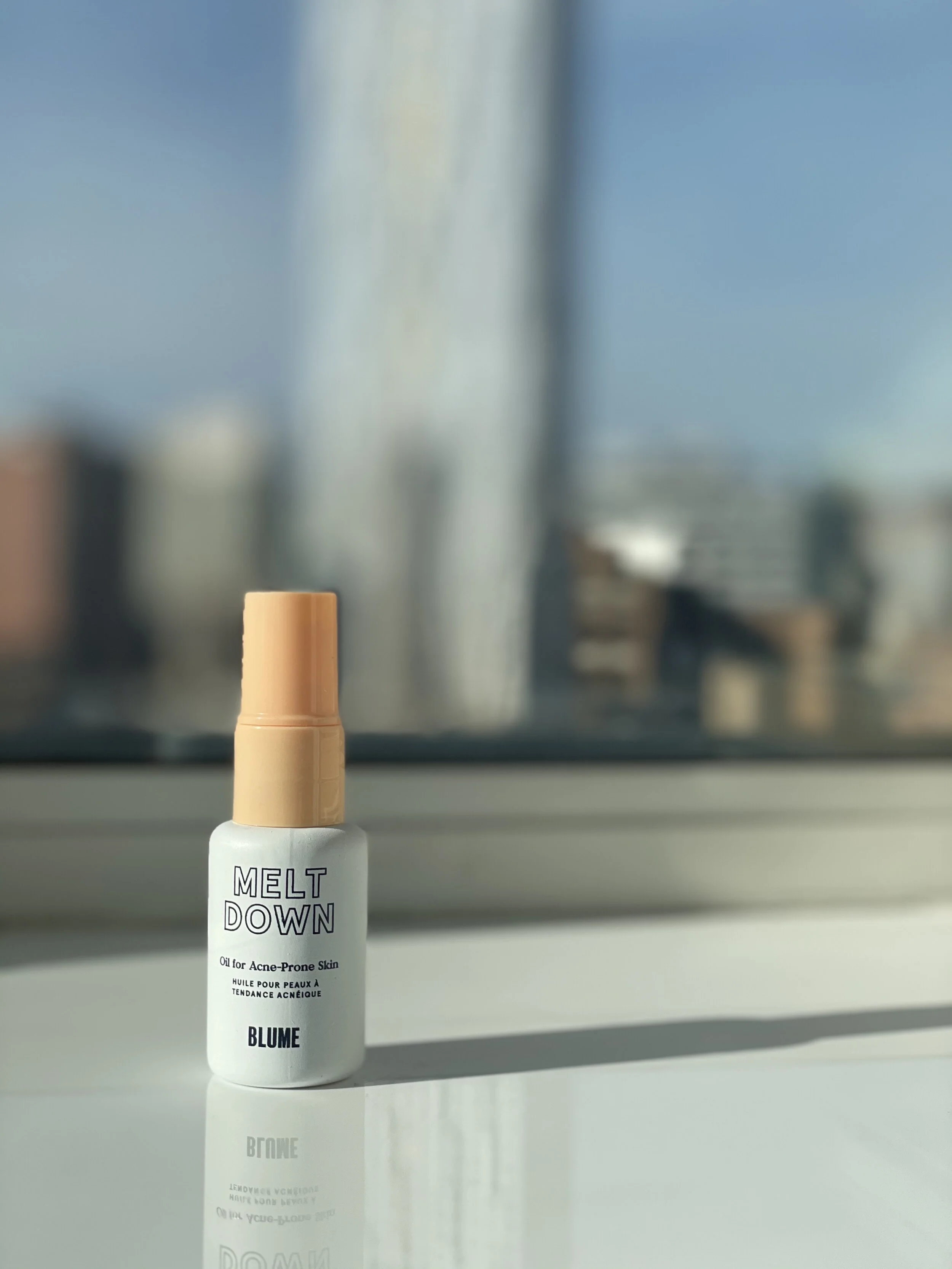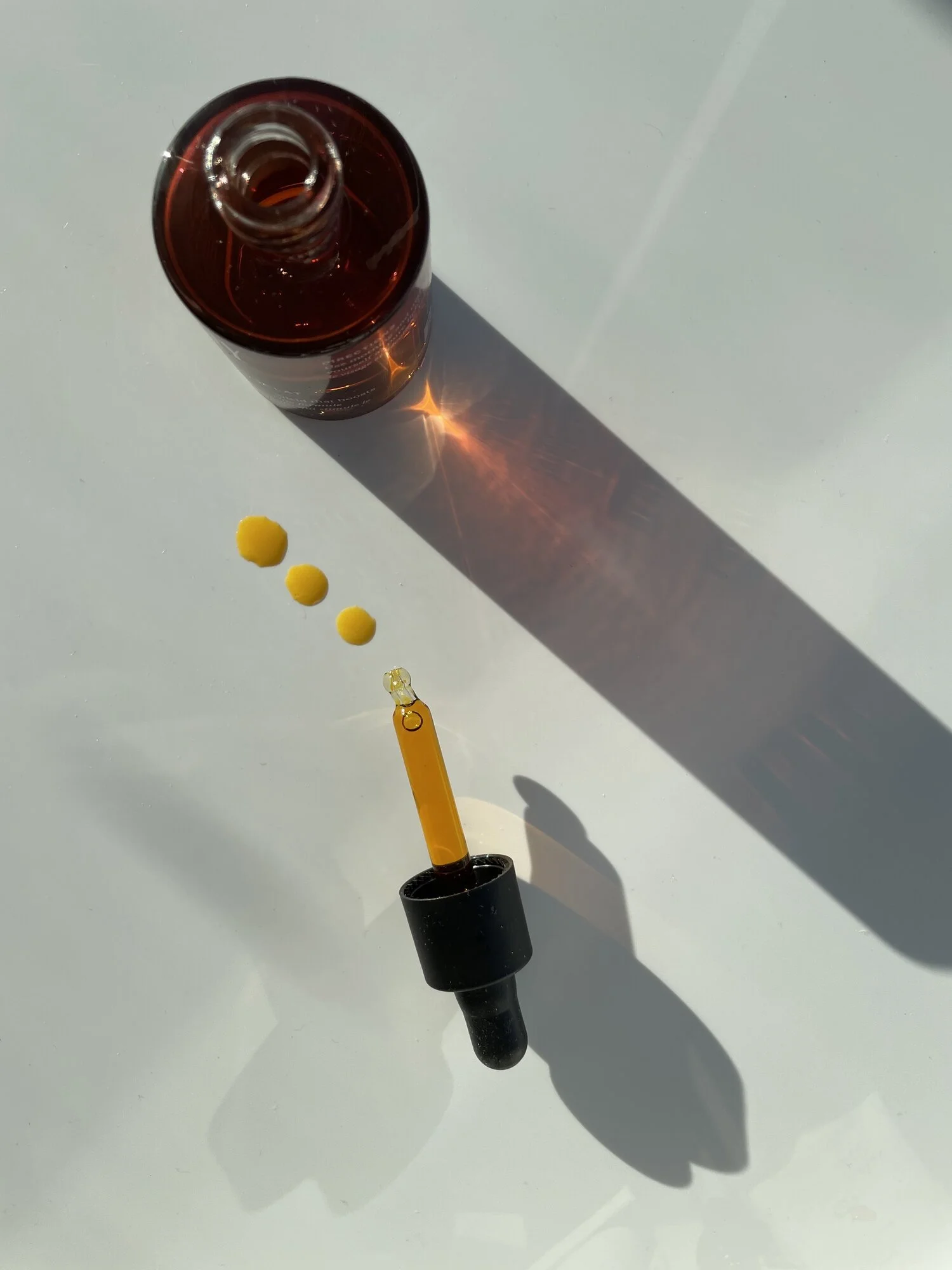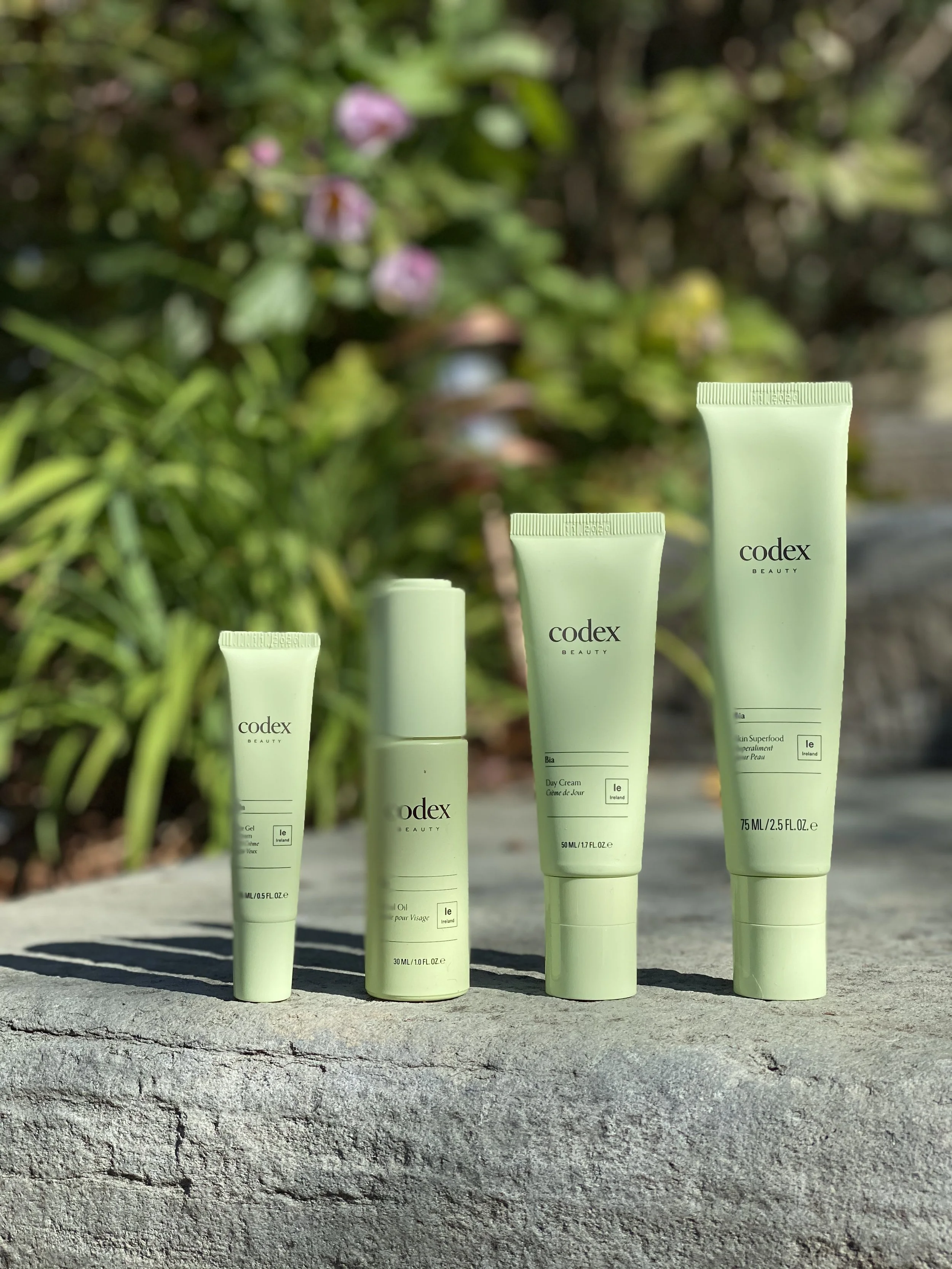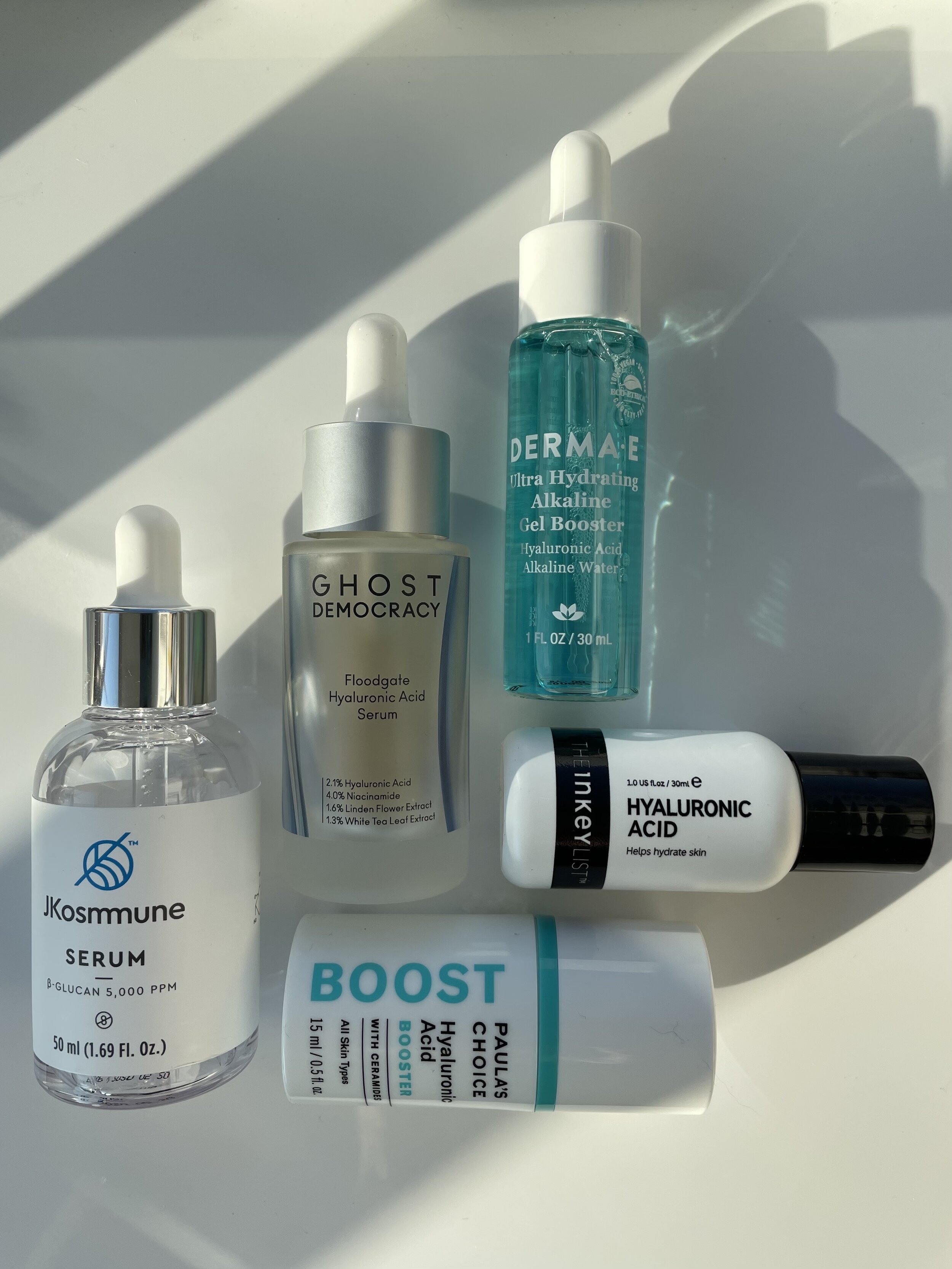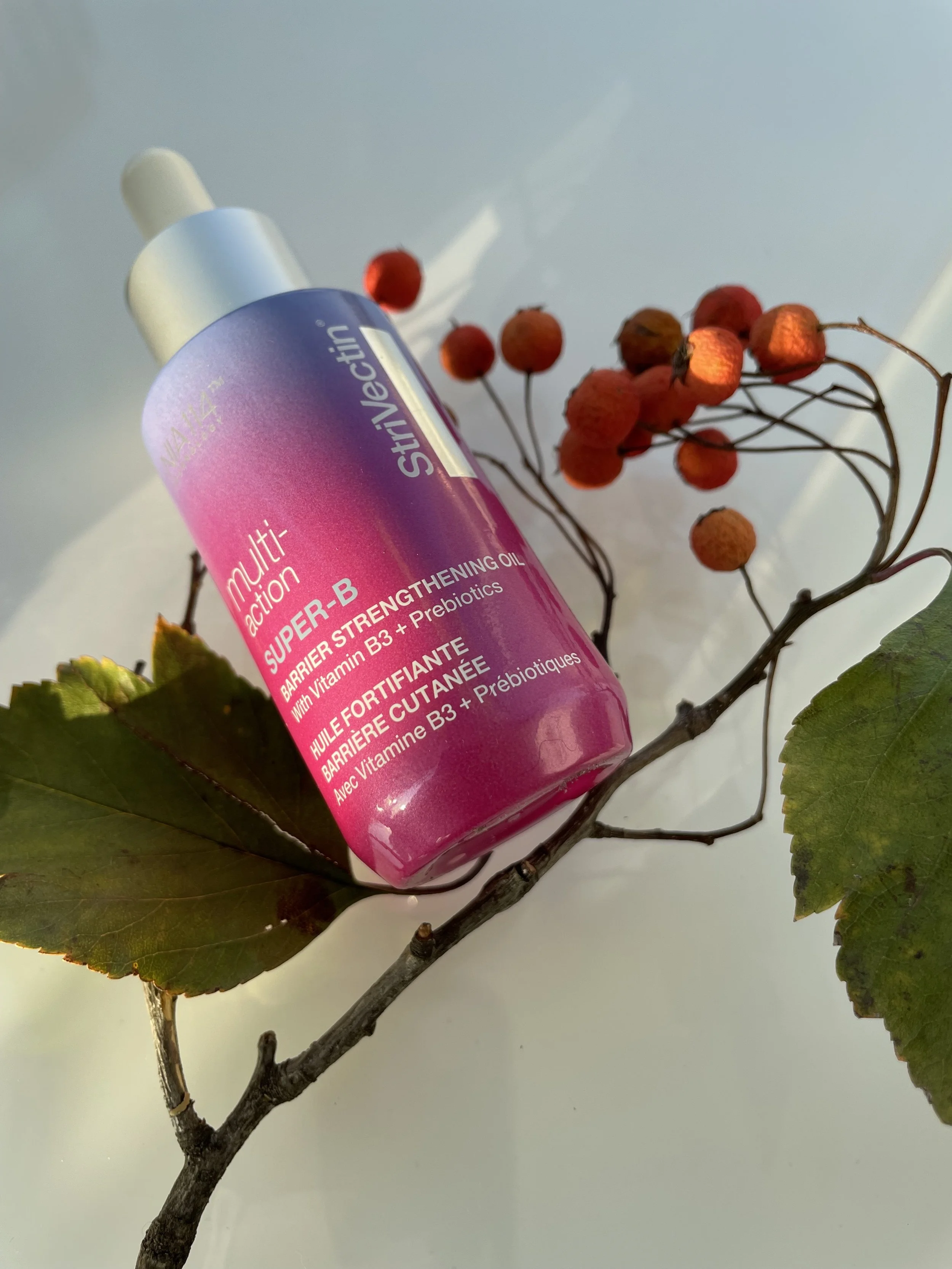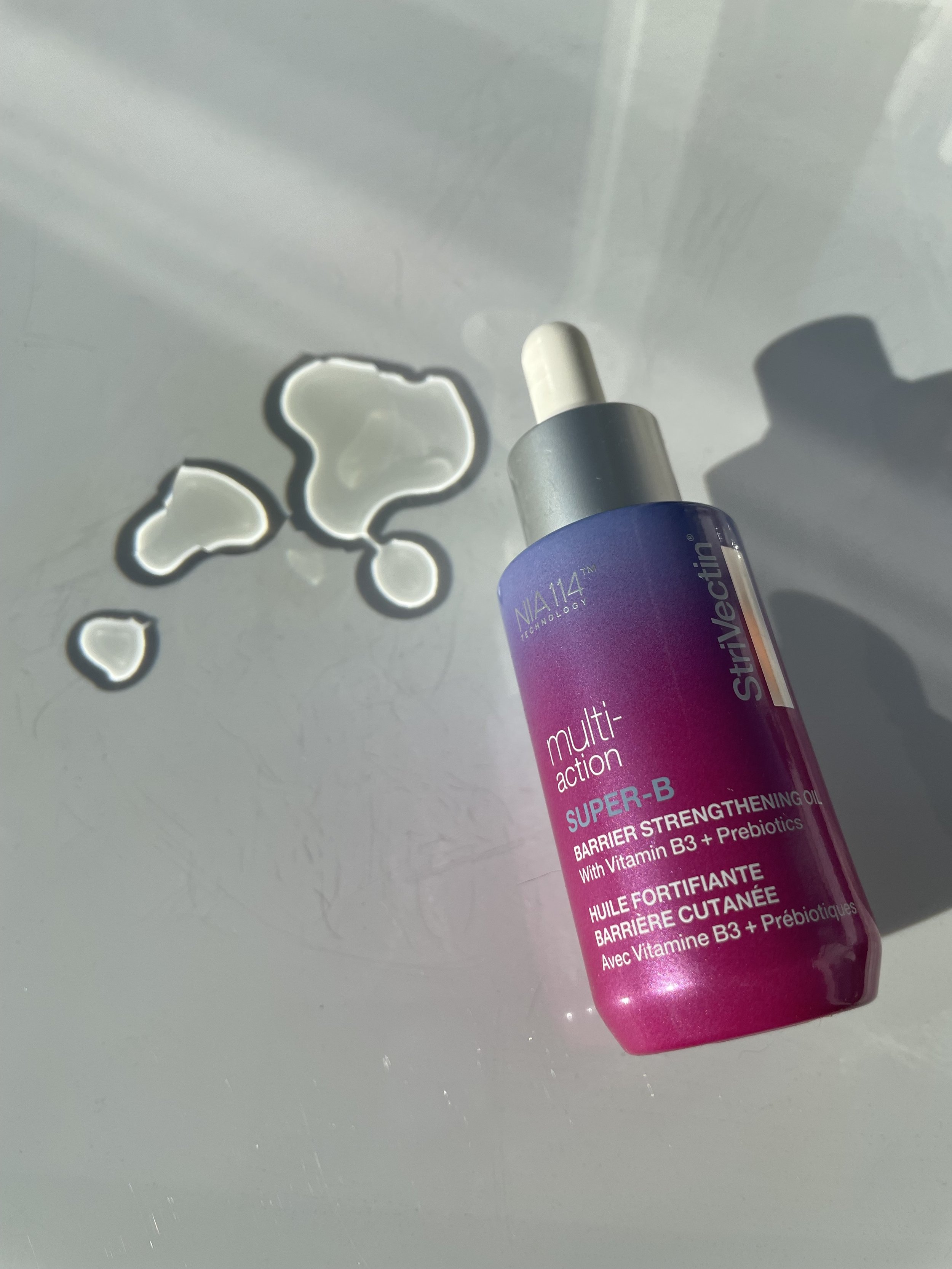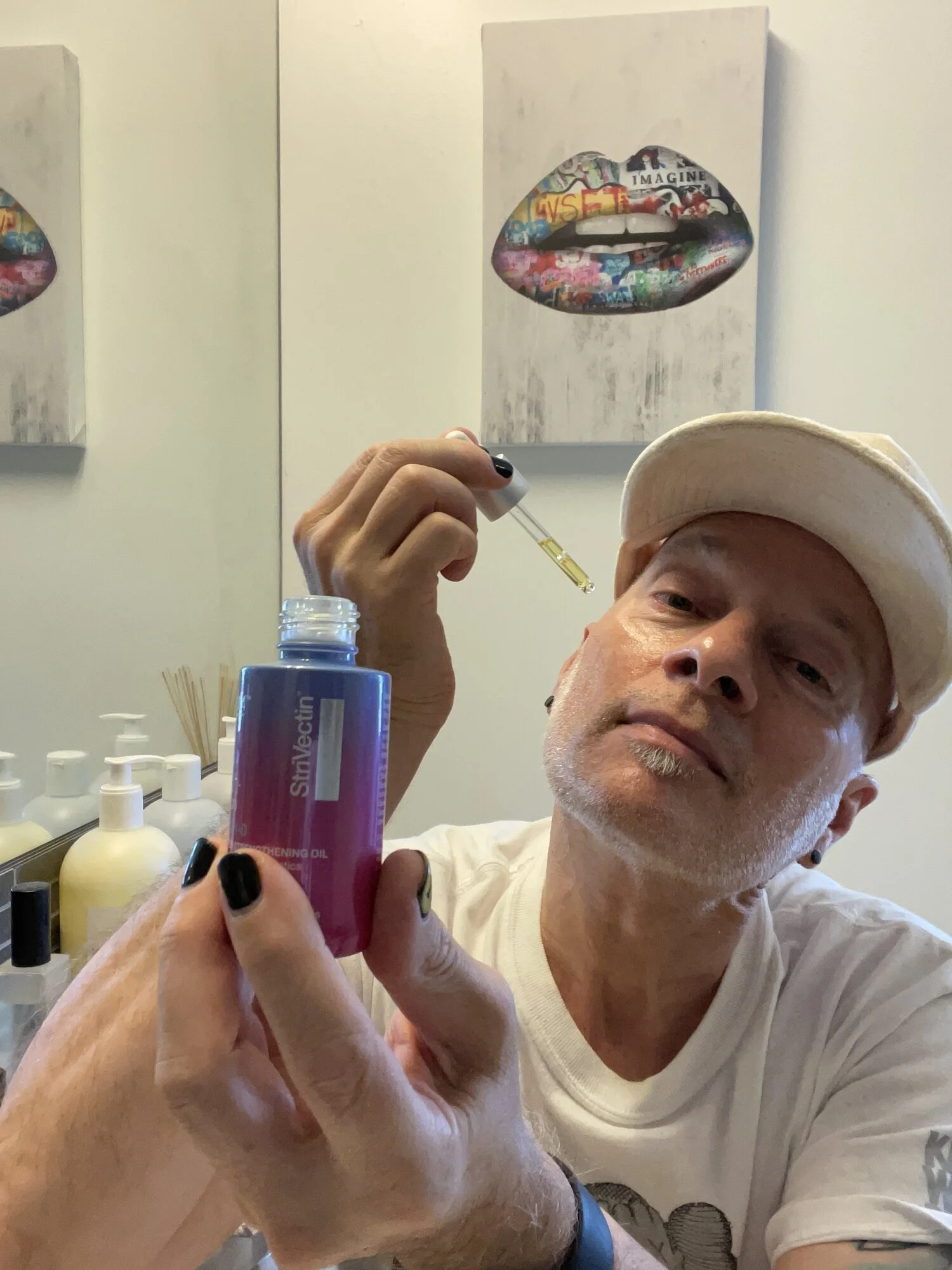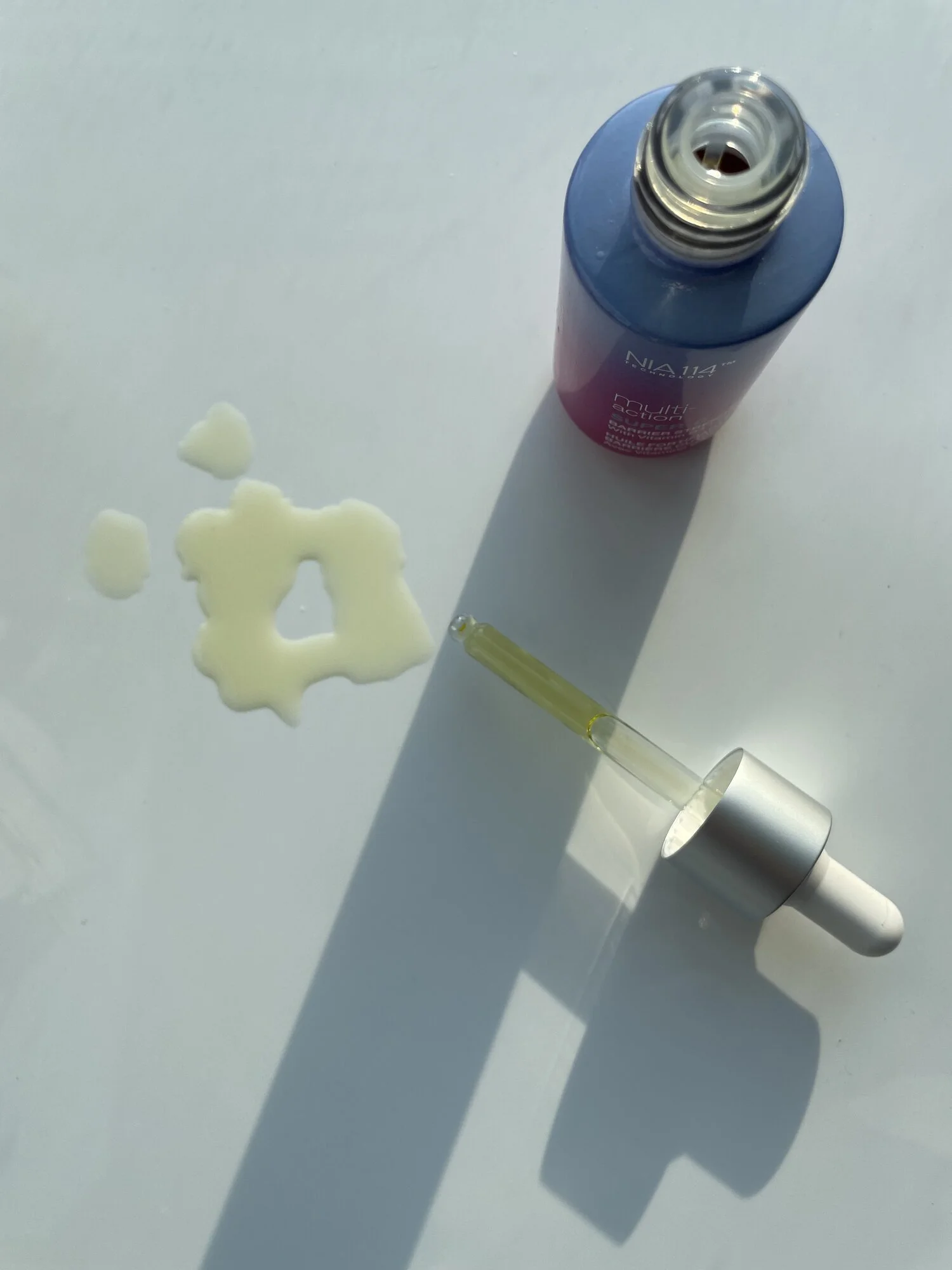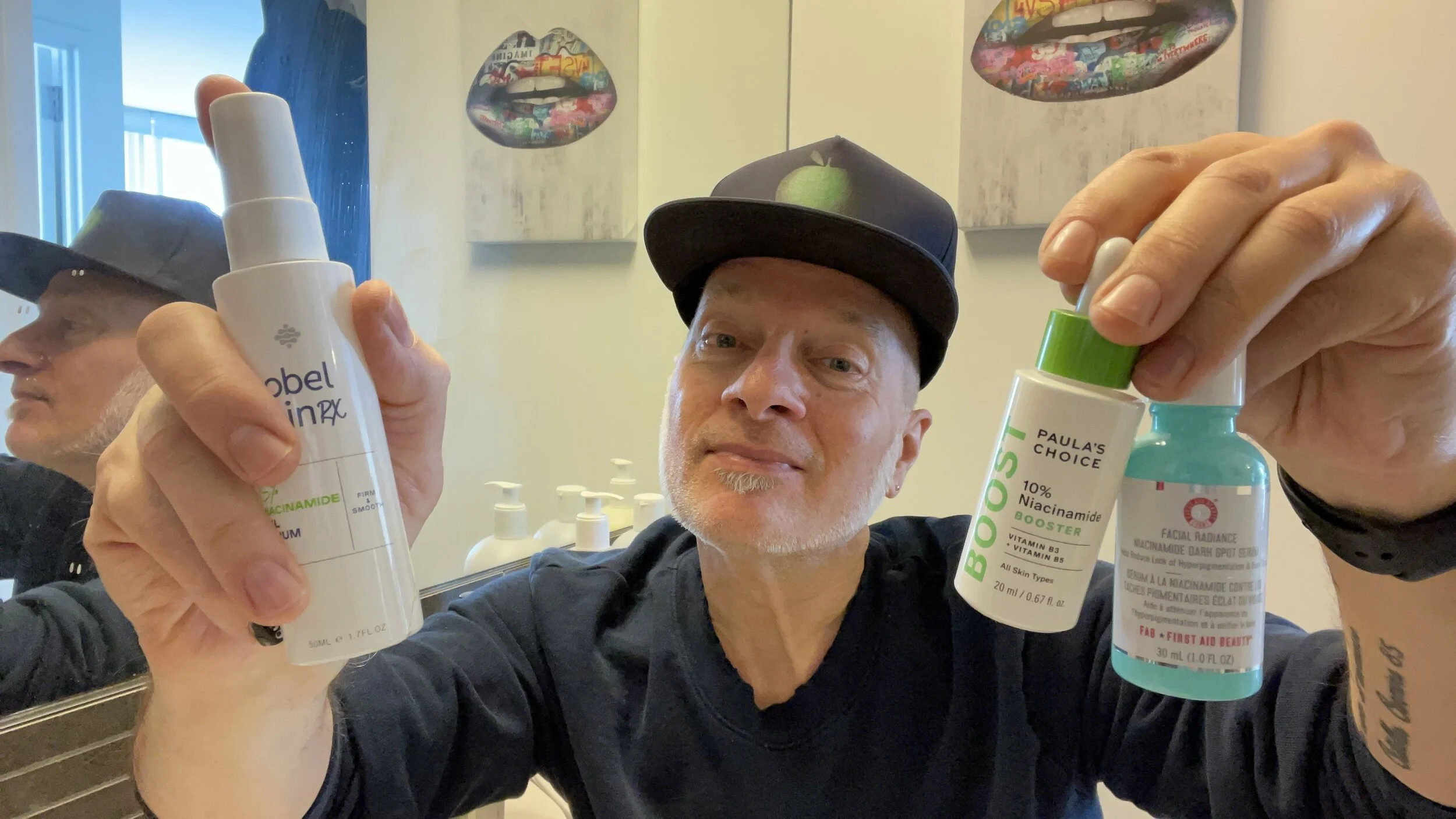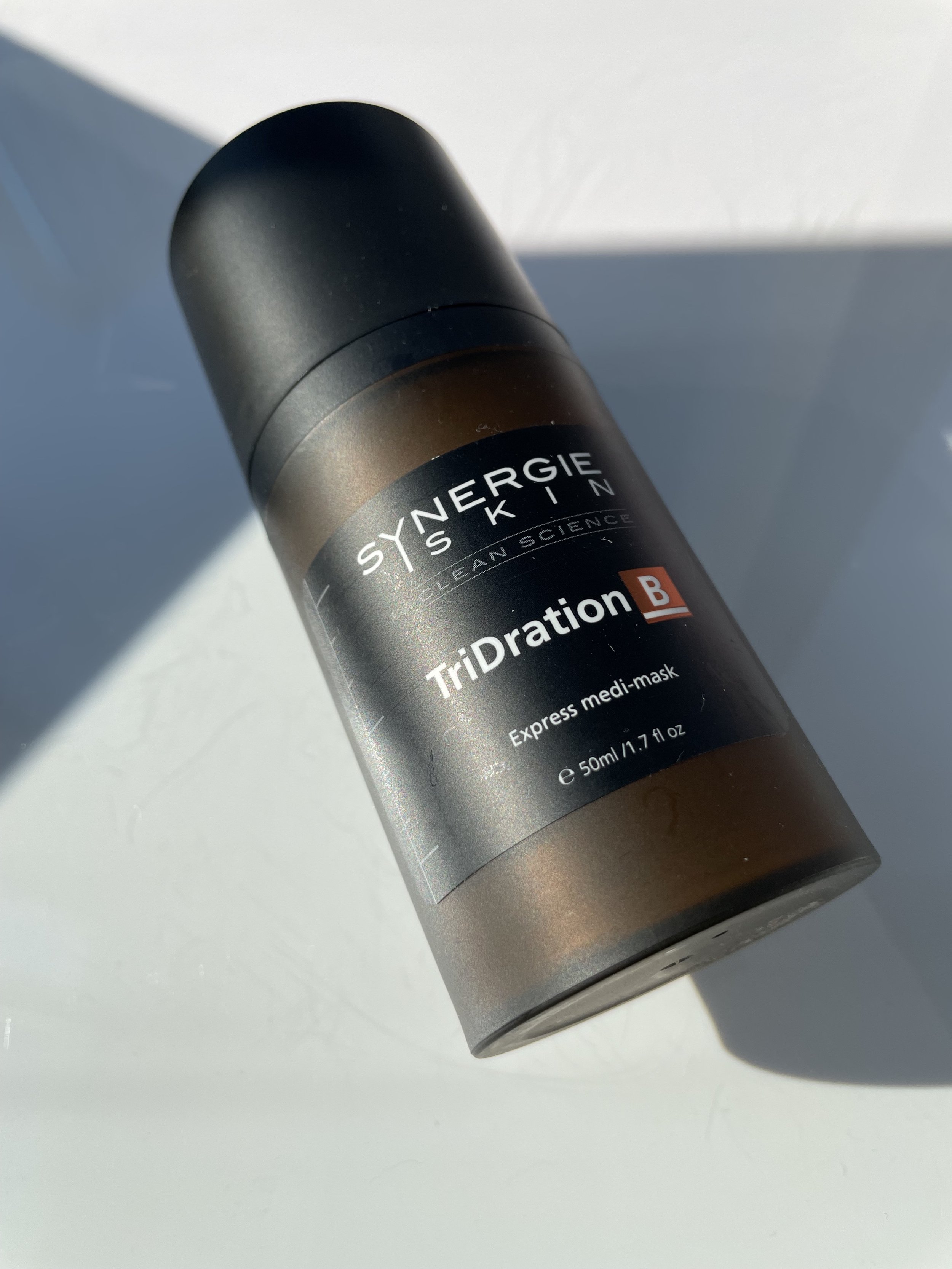PRODUCT REVIEW: STRIVECTIN SUPER-B BARRIER STRENGTHENING OIL – BEST BRIGHTENING FACIAL OIL, BEST FACE OIL WITH NIACINAMIDE
STRIVECTIN | SUPER-B BARRIER STRENGTHENING OIL
This product review was originally part of my blog article titled, Seasonal Skincare Transitioning: Facial Oils I Love that Make Me Excited for Cold Weather - Part Two. You can catch the full piece here.
__
Just last week I was saying that it had been the coldest it’s been since mid-March. I was (and remain!) nervous that it’s going to a harsh, damp, brutally cold winter. And lo and behold, it’s snowing today.
To maintain optimal skin health in cold, dry, low-humidity weather, you need to make a real effort to keep your skin from dehydrating. How? With cold weather skincare.
I kicked off the FW21 season with my two-part series on the best face creams for dry skin and all skin types in the cold. Titled, Seasonal Skincare Transitioning: Moisturizers I Love That Make Me Excited For Cold Weather, the series features my top picks for all skin types. Each of the articles highlights one cold weather option for each of the four major skin types — dry, oily/acne prone, sensitive, and normal or all skin types. No matter your skin type, there’s a moisturizer for you. Check out Part One here and Part Two here.
Then last week, I continued my series on Seasonal Skincare Transitioning with the first of two articles on my favorite facial oils titled, Seasonal Skincare Transitioning: Facial Oils I Love that Make Me Excited for Cold Weather - Part One. You can catch the initial collection of four facial oil faves here.
SEASONAL SKINCARE: THE BEST PRODUCTS FROM THE ORDINARY AND NIOD THAT GET ME EXCITED FOR COLD WEATHER!
In part one, the first of my FW21 facial oils included Biography’s Golden Ray Glow Drops. While I’ve reviewed it on the blog previously, I’ve simply fallen in love with it all over again this year. It’s perhaps the most luxurious of the entire FW21 collection.
I’m a huge fan of the clean, democratically priced Naturium brand and have reviewed several of their face serums on the blog over the past several months. They have a number of Vitamin C serums and oils and the brand’s Vitamin C Face Oil is a wonderful formulation. Definitely check it out in Part One.
PRODUCT REVIEW: NATURIUM VITAMIN C FACE OIL – BEST FACIAL OIL WITH VITAMIN C
The third facial oil in my initial article was Dr. Elsa Jungman’s Start Over Moisturizing Serum. It’s formulated to fix the microbiome by rebalancing surface bacteria and strengthening the skin barrier. Dr. Elsa is one of the few true experts on the skin microbiome, what makes it tick, and what it needs to tick right.
Lastly, I featured the Maelove Love 31 Precious Face Oil — my first product inclusion from the clean beauty brand. If you love a sensorial, fragrant facial oil Maelove’s Love 31 will certainly get you excited for cold weather skincare.
What makes facial oils so unique — and uniquely beneficial during cold weather? Well, a great facial oil is the heaviest moisturizer in your defensive arsenal against the dry, low-humidity air characteristic of the colder months no matter the climate. Most people don’t think of facial oils as a “moisturizer.” What usually comes to mind is a cream. And I know facial oils aren’t popular with everyone — particularly those with oily and acne prone skin. Psst…even an oily skin type can benefit from a facial oil suited for oily skin — like the Blume Meltdown Acne Oil.
PRODUCT REVIEW: BLUME | MELTDOWN ACNE OIL - BEST FACIAL OIL FOR OILY SKIN, BEST FACIAL OIL FOR ACNE
In winter, I prefer facial oils to conventional cream moisturizers, especially the ones that regrettably come in jars. I didn’t always understand facial oils and, like so many, believed they were somehow better for other people, perhaps best for very dry skin types.
Oh the misunderstood facial oil. A lot of people dislike them because they tend to sit on the skin, or barely absorb into the skin’s surface. That’s kind of the point. They’re the most occlusive of all skincare products, meaning they’re intended to defend skin against moisture loss. They do that by occluding, or blocking water from escaping through the surface and dehydrating your skin.
What Does a Facial Oil Do and What Are the Benefits of Face Oil?
There is a really wonderful article from the experts on the Paula’s Choice Research Team titled, How Facial Oils Help Skin. Here is a glimpse of their insights:
You may have noticed more and more brands are launching pure oils like argan, jojoba, coconut, or blends of oils with all manner of tempting claims. But do these facial oils live up to their potential?
The research-supported facts about what plant oils can do for skin is rather fascinating. They're not miracles, but the right plant oil or a beautiful a blend of beneficial oils can make a remarkable difference for dry, flaky, or dehydrated skin; in fact, non-fragrant facial oils can be suitable even for eczema-prone skin. Facial oils are for anyone whose skin could use a boost of nourishing, smoothing renewal, especially when seasonal cold or drier climates disturb your skin.
What are Facial Oils?
Facial oils can include any fragrant plant oils (often called essential oils, but they are anything but essential—more on that in a moment), non-fragrant plant oils (your skin will love these) or synthetic oils (such as mineral oil—which gets a bad rap in the world of skincare but for the record, the research doesn't support the negative information you find on the Internet).
Despite the name, these oils can be used anywhere on the face or body—there's no research showing that certain oils are better for one part of your skin or another. Such a notion is without logic or science.
One of the most important benefits of a well-formulated facial oil is to prevent dehydration through trans-epidermal water loss, or TEWL. Dehydration hasn’t traditionally been recognized as one of the main causes of skin aging. In fact, I consider both sun damage and dehydration to be the two key culprits in all signs of aging — including the formation of fine lines and wrinkles, loss of firmness and even sagging.
My own neck is the perfect barometer!
During the colder months, the skin on my neck seems to hollow out as the layers dehydrate and deflate. As hard as I try, it’s often a losing battle. Fortunately, my skin bounces back around March. It’s a fascinating experiment as I struggle to keep my skin optimally hydrated in the cold. I’m much better at it now than I used to be; and that’s because I fully understand the effects of TEWL on skin health.
BRANDS I LOVE: CODEX BEAUTY - CLEAN, NATURAL SKINCARE FOR HEALTHY, YOUTHFUL SKIN
What Is Trans-Epidermal Water Loss?
For a deep-dive into trans-epidermal water loss (or TEWL), there’s an excellent article on the health website Skin Better titled, What Is Transepidermal Water Loss and Why Is it Important? It’s available to read here. In the piece, the author explains TEWL as follows:
“The skin is comprised of three primary layers: the epidermis, the outermost layer; the dermis or middle layer; and the hypodermis, the undermost layer. When water passes from the dermis through the epidermis and evaporates from the skin’s surface, this is known as transepidermal water loss (International Journal of Pharmaceutics).
While TEWL is a process that your skin naturally regulates, certain factors that can damage the skin’s barrier function can also affect TEWL levels. Circumstances such as injury, low-humidity weather conditions and topically applied products that dry out the skin can impact TEWL.
To achieve this, combine humectant and occlusive skincare ingredients.
Transepidermal water loss can contribute to a variety of dry skin conditions, and although it is a natural process, there are ways that you can help your skin stay moisturized and hydrated. Hydration refers to the water content of the skin, whereas moisturization is the skin’s ability to retain those water molecules. Therefore, your skin needs both elements to maintain desirable levels of TEWL.
To achieve this, combine humectant and occlusive skincare ingredients. Humectants help to draw moisture to the epidermis, either from the air if it is humid enough, or from the underlying dermis in low-humidity conditions. Because water content that is drawn from the dermis can be lost through TEWL, it’s important to combine the use of humectants with occlusives. Together, these ingredients create a reservoir of moisture in the epidermis and act as a barrier on the skin to help prevent TEWL by sealing in that moisture. The occlusive agents simultaneously keep pollutants, toxins and harmful bacteria out (Skin Therapy Letter).”
MY FAVORITE HUMECTANT SERUMS FROM PAULA'S CHOICE, THE INKEY LIST AND MORE - BEST HYALURONIC ACID SERUMS
The Skincarma “Lock and Block” Prevents Dehydration
To start, preventing dehydration in the first place requires drinking enough water. That differs for each of us based on our weight, the foods we eat, and the climate we live in. It’s even more important during colder periods.
A good rule is to drink one ounce of water each day for every pound of body weight. So, if you weigh 150 lbs., you’ll need to drink 150 ounces of water each and every day to keep your body and your skin optimally hydrated.
Then, employing skincare to treat and prevent dehydration requires what I refer to as a “lock and block” strategy.
It begins with a dedicated humectant serum applied to the skin in both your AM and PM routines that helps to lock water in. Follow with a moisturizer composed of a healthy balance of both humectants and oils to block and prevent the trans-epidermal water loss that can lead to dehydration.
WATCH MY VIDEO REVIEW OF
SKINCARMA LOCK & BLOCK: THE BEST WAY TO KEEP SKIN HEALTHY & HYDRATED IN DRY, COLD AIR!
ON MY YOUTUBE CHANNEL HERE
One of the great things about facial oils is they’re very often water-free, meaning they last a lot longer. Over the years, I’ve amassed quite the museum-worthy collection of facial oils. And I’m excited to share the second four in my two-part series on my FW21 facial oil picks.
Herbal Face Food’s The Serum I doesn’t seem like a facial oil from the name, right? It’s actually a super lightweight, concentrated serum-oil made with a slew of seriously potent botanical oils and extracts. It has an otherworldly feel on the skin and is one of my favorite product discoveries of 2021 — and a serious contender for the Skincarma Product of the Year.
The Strivectin Super-B Barrier Strengthening Oil is infused with the brand’s proprietary form of Vitamin B3, or Niacinamide. It’s a superb blend on non-fragrant plant oils as well as nourishing probiotics to help rebalance the surface microbiome.
The Paula’s Choice CBD Oil + Retinol is a genius formula and one of the best anti-aging facial oils with Retinol and super-soothing Cannabidiol or CBD. It’s hands down one of my favorite products from the brand.
And rounding out my facial oil picks is Glossier’s Futuredew Oil Serum Hybrid. It’s a fascinating formula with benefits for the complexion that go beyond those of any other facial oil in my entire collection.
Let’s have a look at one of my FW21 facial oils, which I consider ideal for cold weather in part two of the series…
StriVectin | Super-B Barrier Strengthening Oil with Vitamin B3 and Prebiotics
Here in NYC a change of seasons is always only a matter of a few weeks away. And now that we’re knee-deep in the fall chill and soon to be knee-deep in snow, I want products that both keep my skin from drying out and keep my complexion looking less dead.
Strivectin introduced their Super-B Barrier Strengthening Oil with Vitamin B3 and Prebiotics around mid-year and I have to say it’s perfect for keeping my skin hydrated while keeping my complexion looking alive.
If you’re not familiar with Strivectin, the brand’s formulas are all powered by a proprietary form of Niacin, a variation of Vitamin B3, that the brand calls NIA-114. This molecular cousin of Niacinamide possesses a lipidic quality that enables the molecule to penetrate the skin barrier more deeply. Similar to Niacinamide, Strivectin’s NIA-114 molecule has the ability to strengthen the skin barrier, brighten the complexion, and defend against aging environmental aggressors.
Strivectin’s Super-B Barrier Strengthening Oil with Vitamin B3 and Prebiotics is a rich, nourishing oil that dries down nicely, though I wouldn’t describe it as a dry oil per se.
In addition to the brand’s Niacinamide alternative (listed on the INCI as Myristyl Nicotinate), there’s a healthy dose of skin nourishment in the form of Squalane, Passiflora Edulis Seed Oil, Rosa Canina Fruit Oil, Cocos Nucifera (Coconut) Oil, Simmondsia Chinensis (Jojoba) Seed Oil, Limnanthes Alba (Meadowfoam) Seed Oil — all in the top ten and all perfect for locking moisture in the skin to prevent TEWL.
But what is most intriguing and unique about the Super-B Barrier Strengthening Oil is the inclusion of prebiotics to support the skin’s microbiome health. You’ve probably been hearing a lot more about them lately. Prebiotics are essentially food or nutrition for the good bacteria in the microbiome, or probiotics, helping them to proliferate in and on the body’s microbiomes.
What Are Prebiotics and Are Prebiotics Good for Skin?
Prebiotics, probiotics and post-biotics are a legitimate trend in skincare over the past two to three years — with probiotics, or good bacteria, leading the way. So what exactly are prebiotics and what is their benefit to the skin?
According to the experts on the Paula’s Choice Research Team, prebiotic are becoming increasingly important in the maintenance of skin health. The team outlines their unique benefits to the skin in an article titled simply, What Are Prebiotics for Skin?
An excerpt from the piece:
Prebiotics are an intriguing group of ingredients making skin care headlines because of the important role they can play in addressing a variety of skin concerns. Their gut-health benefits when consumed orally are well-established through research, and now emerging studies are shedding fascinating light on how topical prebiotics can help when applied to skin.
Prebiotics are essentially foods consumed by probiotics. Probiotics are the good bacteria in and on the body that keep our bodies balanced and healthy inside and out (1).
Experts around the world consider probiotics fundamental to being healthy and youthful, and since prebiotics are the natural partner to probiotics, having both gives you the best of both worlds. As it turns out, the benefits of prebiotics and probiotics in our gut are also apparent when these ingredients are applied to skin (2).
Applying prebiotics to skin helps probiotics thrive so they can:
Keep the surface of skin—its first line of defense—balanced, younger-looking, and strong (3).
Offset factors that lead to redness, dryness, and a weakened surface (4).
Ward off signs of aging skin (4).
Restore a healthy microbiome balance (good bacteria) (2).
What Prebiotic Ingredients Should I Look for In Skin Care?
Look for skin care products with prebiotic plant sugars, such as xylitol, rhamnose, and a large group of ingredients known as fructooligosaccharides (including raspberry oligosaccharides) (4). Glucomannan is a particularly interesting prebiotic due to the way it works with a wide range of probiotics that help control acne (5).
Foods with prebiotics include garlic, onions, oats, barley, wheat bran, asparagus, bananas, and flaxseed as well as a plant fiber known as inulin, found in chicory root (1). Some of these plant extracts or their derivatives are also included in skin care products where you can easily reap the benefits of applying prebiotics to skin.
Serums or moisturizers with prebiotics such as these may already be in your routine (check your ingredient labels to make sure).
Strivectin’s Super-B Barrier Strengthening Oil with Vitamin B3 and Prebiotics is a supremely nourishing, balancing, pro-skin health treatment and, in my opinion, one of the best products the brand has to offer.
If you’ve been eager to try Strivectin out, the Super-B Barrier Strengthening Oil is the ideal place to start. And, quite surprisingly, the brand has just relaunched on the Sephora website!
What I like about it: The Strivectin Super-B Barrier Strengthening Oil with Vitamin B3 and Prebiotics is a rather well-rounded facial oil that delivers multiple benefits for the skin. It nourishes and balances the surface microbiome and with its high level of Niacinamide, it helps to strengthen the skin barrier and brighten a dull complexion. That’s everything skin needs in the cold!
What I don’t like about it: At $72, it’s more expense than most of the facial oils in its class. But, as I say with costlier skincare, if you’re going to pay more, at least buy something that’s well-formulated and pro-skin health. The Super-B Barrier Strengthening Oil sure is.
Who it’s for: All skin types, except perhaps very oily and acne-prone.
SHOP THE BLOG: Purchase the Strivectin Super-B Barrier Strengthening Oil with Vitamin B3 and Prebiotics for $72 here.
The Ingredient List of the Strivectin Super-B Barrier Strengthening Oil:
 sii|emo 0 1, Myristyl Nicotinate
sii|emo 0 1, Myristyl Nicotinate  cci, Passiflora Edulis Seed Oil
cci, Passiflora Edulis Seed Oil  emo, Plankton Extract, Bacillus Ferment, Rosa Canina Fruit Oil emo, Cocos Nucifera (Coconut) Oil
emo, Plankton Extract, Bacillus Ferment, Rosa Canina Fruit Oil emo, Cocos Nucifera (Coconut) Oil  emo|perf 0 4, Simmondsia Chinensis (Jojoba) Seed Oil
emo|perf 0 4, Simmondsia Chinensis (Jojoba) Seed Oil  emo 0 0-2, Limnanthes Alba (Meadowfoam) Seed Oil
emo 0 0-2, Limnanthes Alba (Meadowfoam) Seed Oil  emo, Avena Sativa (Oat) Kernel Oil, Helianthus Annuus (Sunflower) Seed Oil
emo, Avena Sativa (Oat) Kernel Oil, Helianthus Annuus (Sunflower) Seed Oil  emo 0 0, Oryza Sativa (Rice) Bran Extract, Helianthus Annuus (Sunflower) Extract
emo 0 0, Oryza Sativa (Rice) Bran Extract, Helianthus Annuus (Sunflower) Extract  so|emo, Rosmarinus Officinalis (Rosemary) Leaf Extract
so|emo, Rosmarinus Officinalis (Rosemary) Leaf Extract  aox|so|amic, Quercus Suber Bark Extract, Oak Root Extract, Panthenyl Triacetate, Glyceryl Caprylate pres, Glycerin
aox|so|amic, Quercus Suber Bark Extract, Oak Root Extract, Panthenyl Triacetate, Glyceryl Caprylate pres, Glycerin  sii|h 0 0, Naringenin, Caprylhydroxamic Acid chel, Fragrance/Parfum
sii|h 0 0, Naringenin, Caprylhydroxamic Acid chel, Fragrance/Parfum  perf, Tocopherol
perf, Tocopherol  aox 0-3 0-3, Citric Acid buff, Hydroxycitronellal
aox 0-3 0-3, Citric Acid buff, Hydroxycitronellal  perf
perfThe Best Niacinamide Serums And Treatments
The Best Sunscreens for Face
WATCH MY VIDEO REVIEW OF
NEW PAMPERING FACIAL OILS THAT WOW ME - FROM KJAER WEIS, BIOSSANCE AND MORE
ON MY YOUTUBE CHANNEL HERE
WATCH MY VIDEO REVIEW OF
MY WINTER SKIN SAVIOR: SKINFIX BARRIER+ LIPID REPLENISHING SKINCARE
ON MY YOUTUBE CHANNEL HERE
WATCH MY VIDEO REVIEW OF
MY FAVORITE HUMECTANT SERUMS FROM PAULA'S CHOICE, THE INKEY LIST, GHOST DEMOCRACY AND MORE
ON MY YOUTUBE CHANNEL HERE
WATCH MY VIDEO REVIEW
HOW’S YOUR MICROBIOME DOING? THE BEST WAY TO CHECK YOUR MICROBIOME HEALTH…
ON MY YOUTUBE CHANNEL HERE
WATCH MY VIDEO REVIEW
A COMPLETE K-BEAUTY ROUTINE WITH THE BEST FACIAL SKINCARE FROM PURITO, COSRX, MISSHA & MORE!
ON MY YOUTUBE CHANNEL HERE
WATCH MY VIDEO REVIEW
RETINOL, RETINOIDS, RETINOIC ACID PART ONE - THE BEST RETINOL FACE CREAMS & SERUMS
ON MY YOUTUBE CHANNEL HERE
WATCH MY VIDEO REVIEW OF
MY WINTER SKIN SAVIOR: SKINFIX BARRIER+ LIPID REPLENISHING SKINCARE
ON MY YOUTUBE CHANNEL HERE
SKINCARMA X HERBAL FACE FOOD EXCLUSIVE!
FOR A LIMITED TIME, SAVE 20% OFF HERBAL FACE FOOD!
Enter code SKINCARMA20 at checkout.
WATCH MY VIDEO REVIEW
THE YEAR’S BEST VITAMIN C SERUMS WITH THE ORDINARY, CLINIQUE, BEAUTY STAT & MORE!
ON MY YOUTUBE CHANNEL HERE
WATCH MY VIDEO REVIEW
AMPERNA PROBIOTIC SKINCARE AND TWO OF THE BEST ANTI-AGING SERUMS FOR SENSITIVE SKIN
ON MY YOUTUBE CHANNEL HERE
WATCH MY VIDEO REVIEW
MY #SELFCARESUNDAY ESSENTIALS WITH SKINFIX, HERBIVORE AND SELFLESS!
ON MY YOUTUBE CHANNEL HERE


